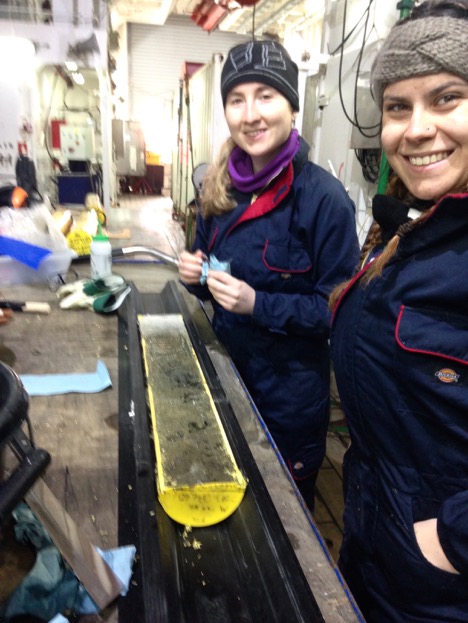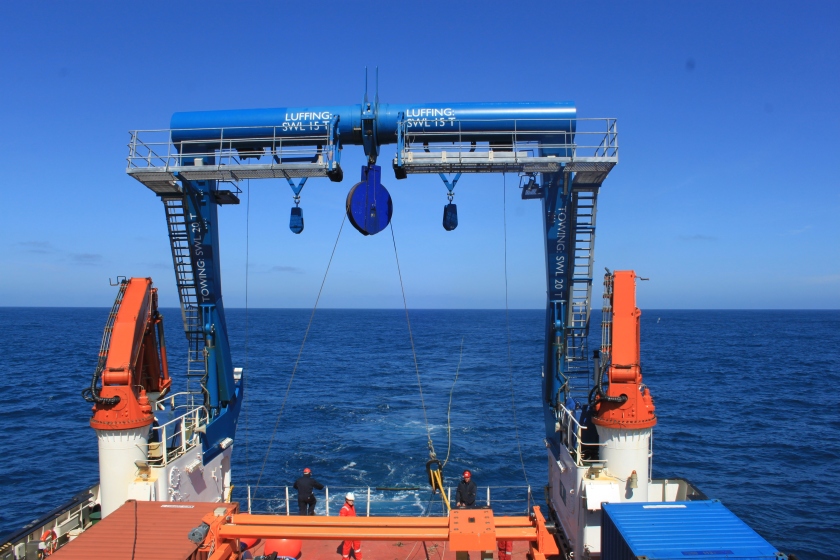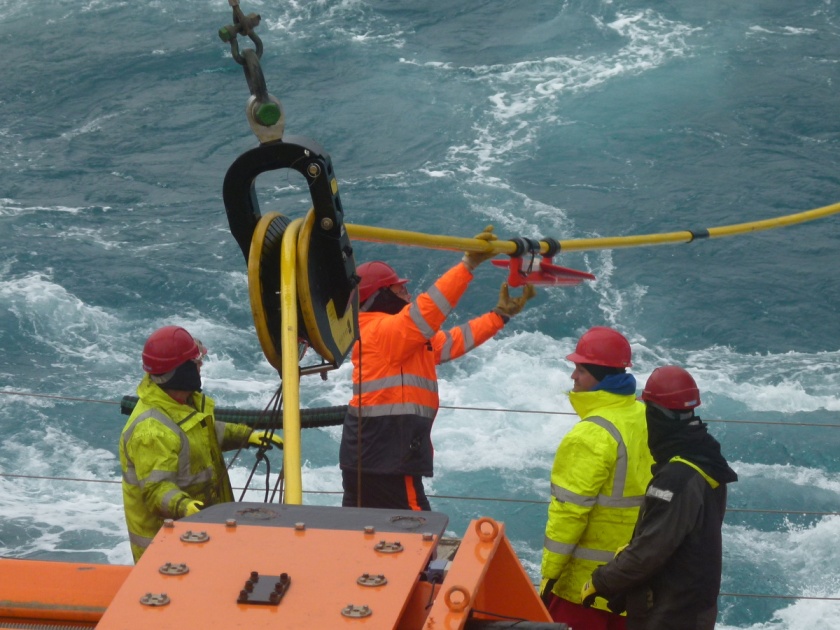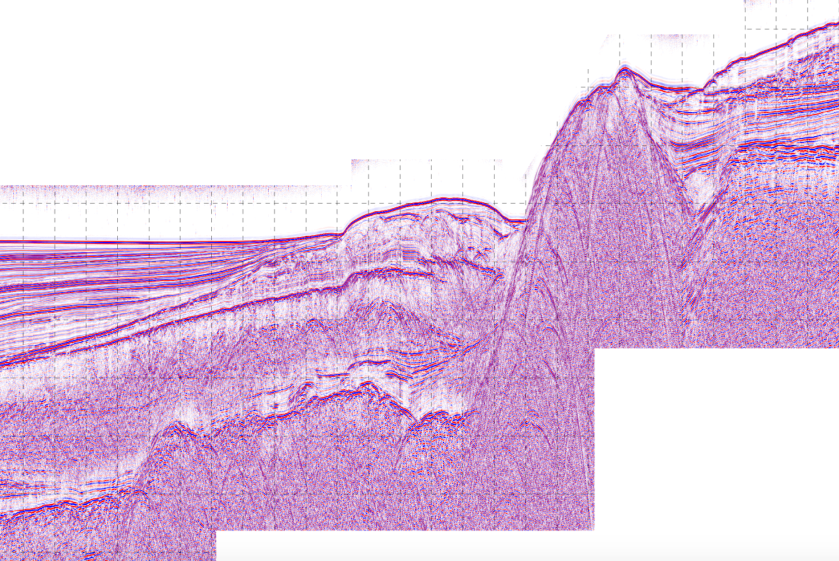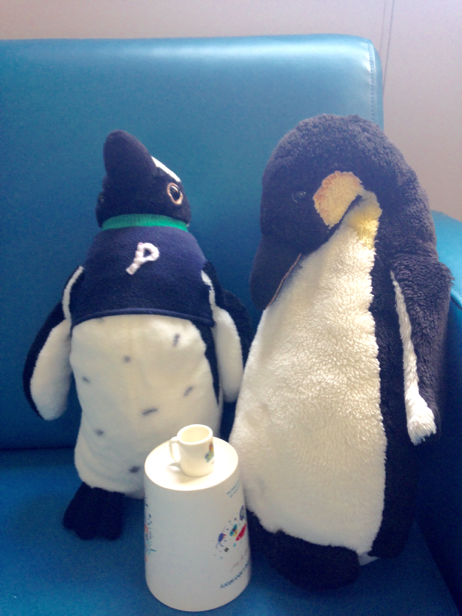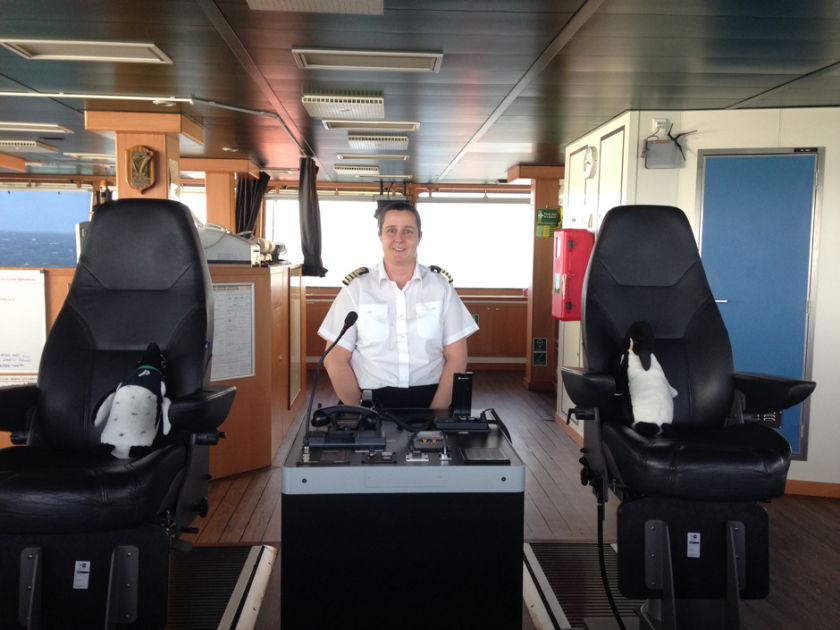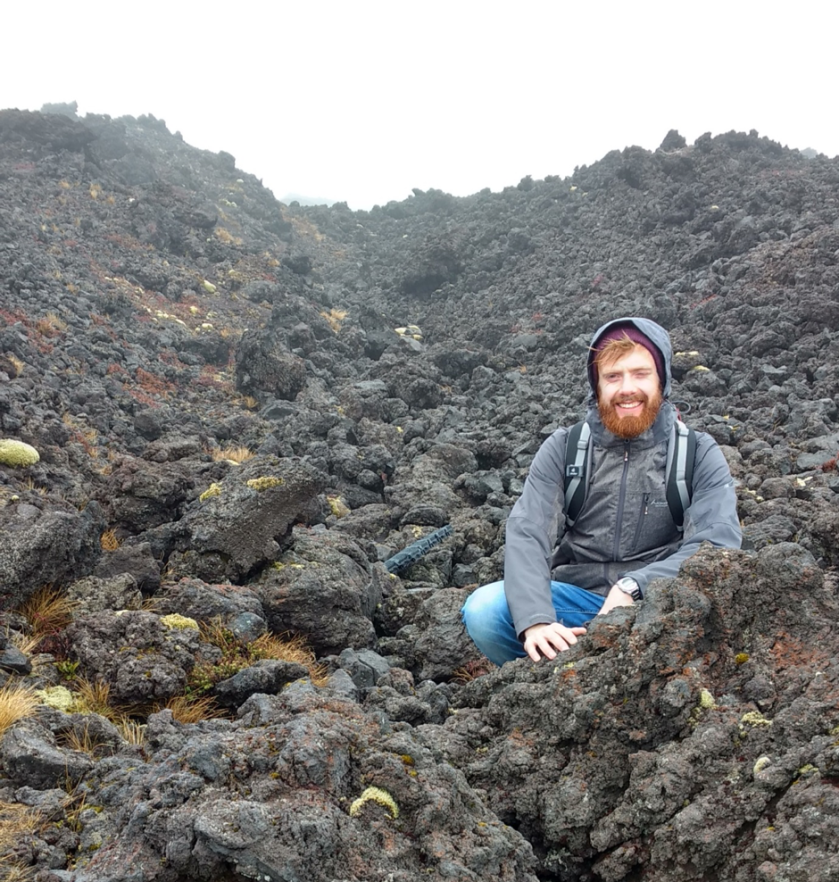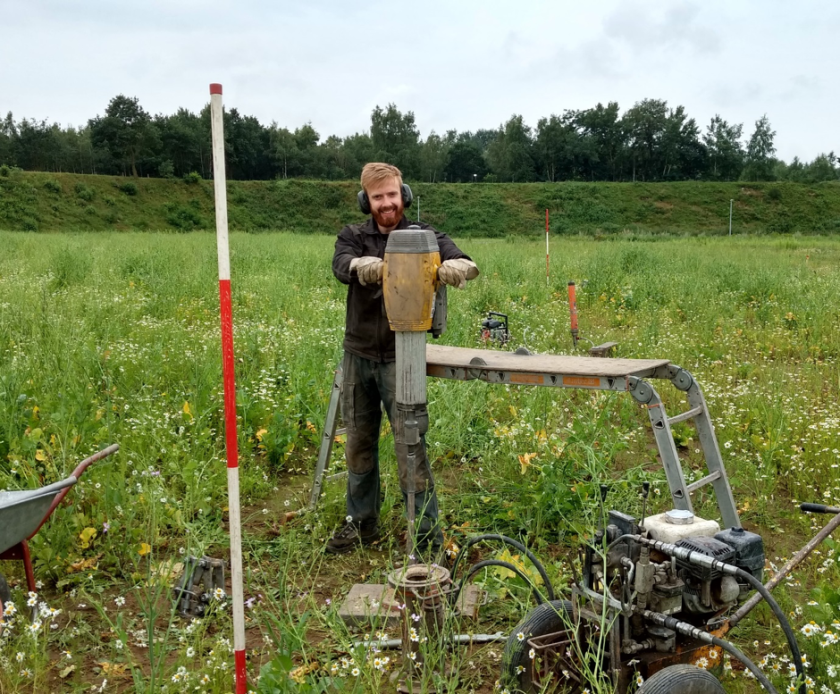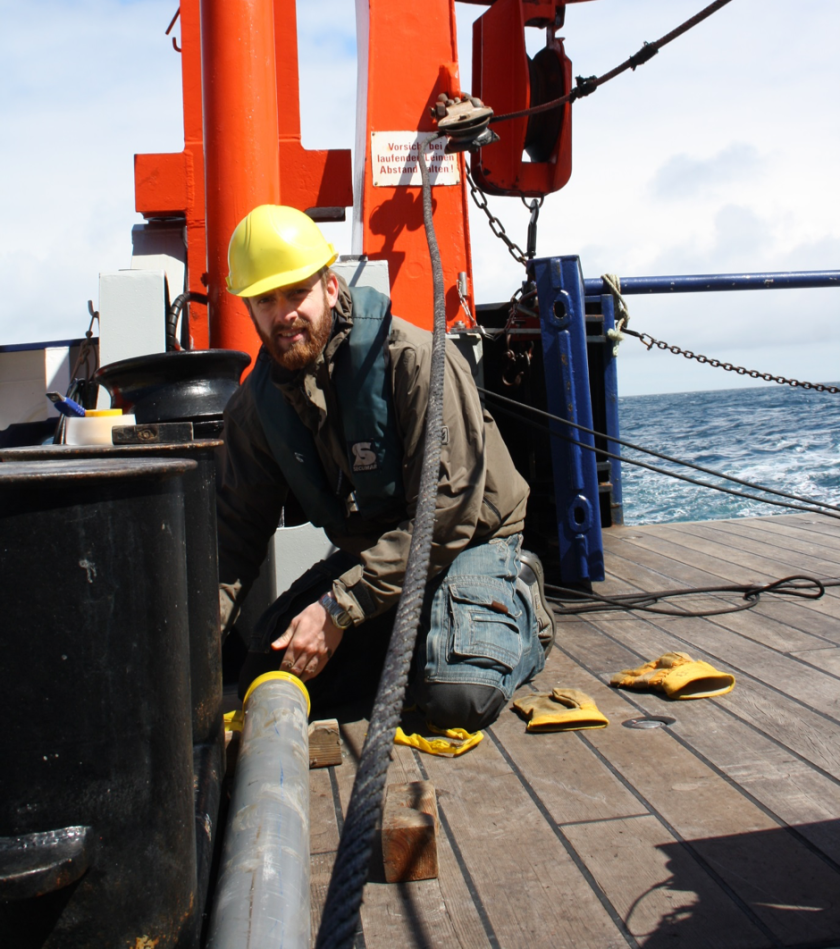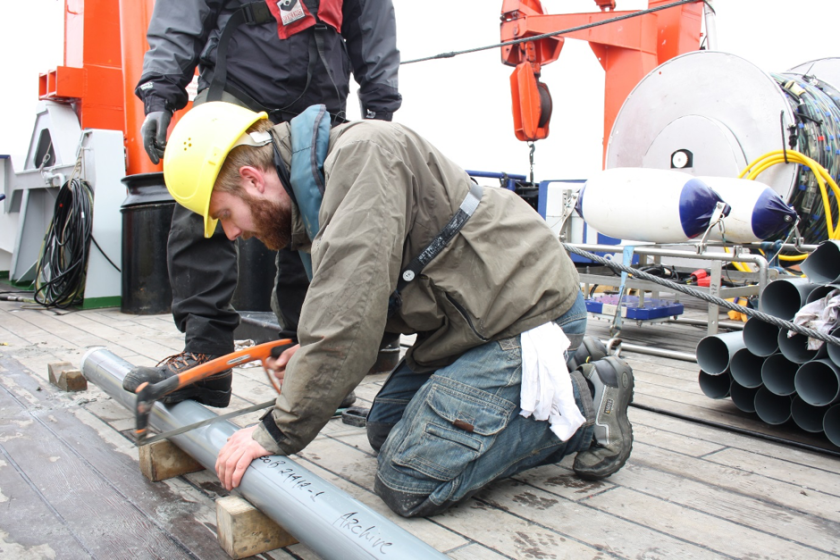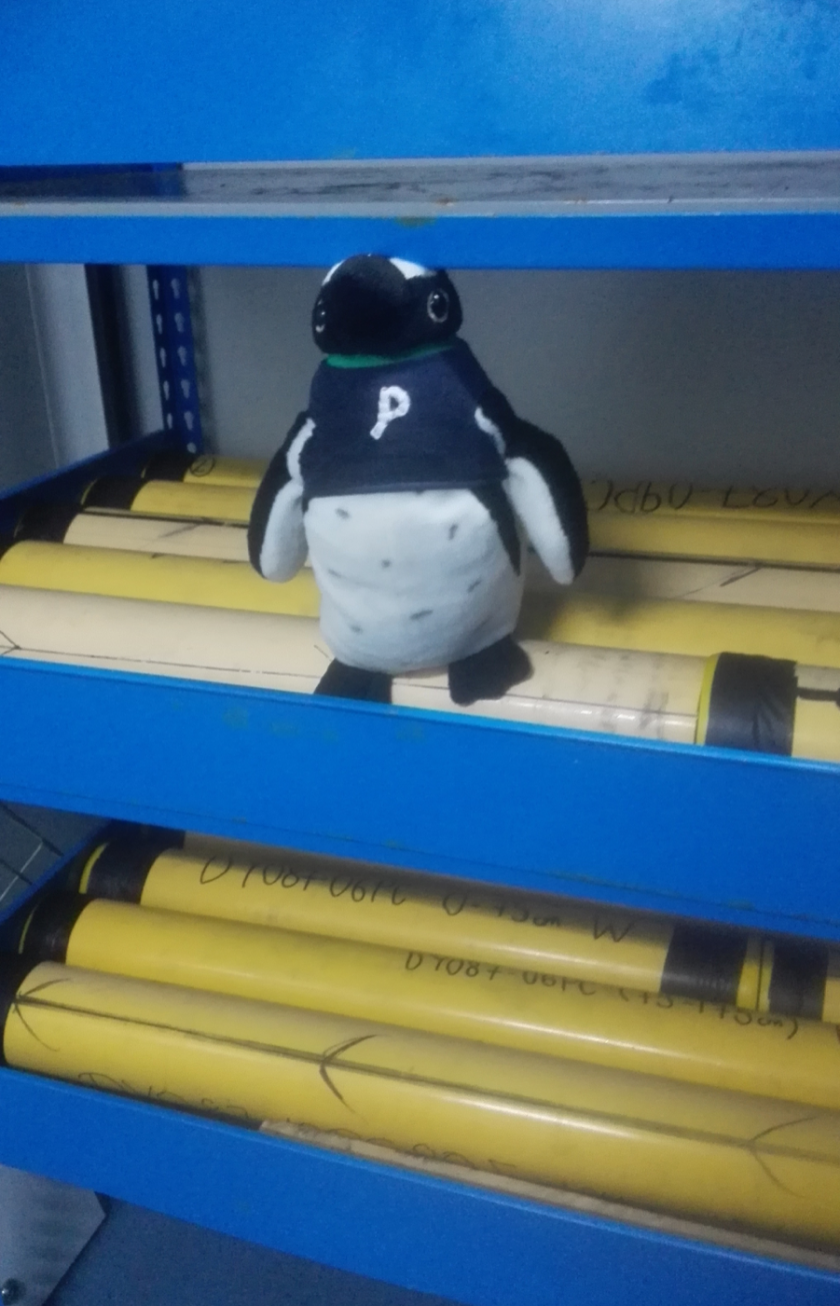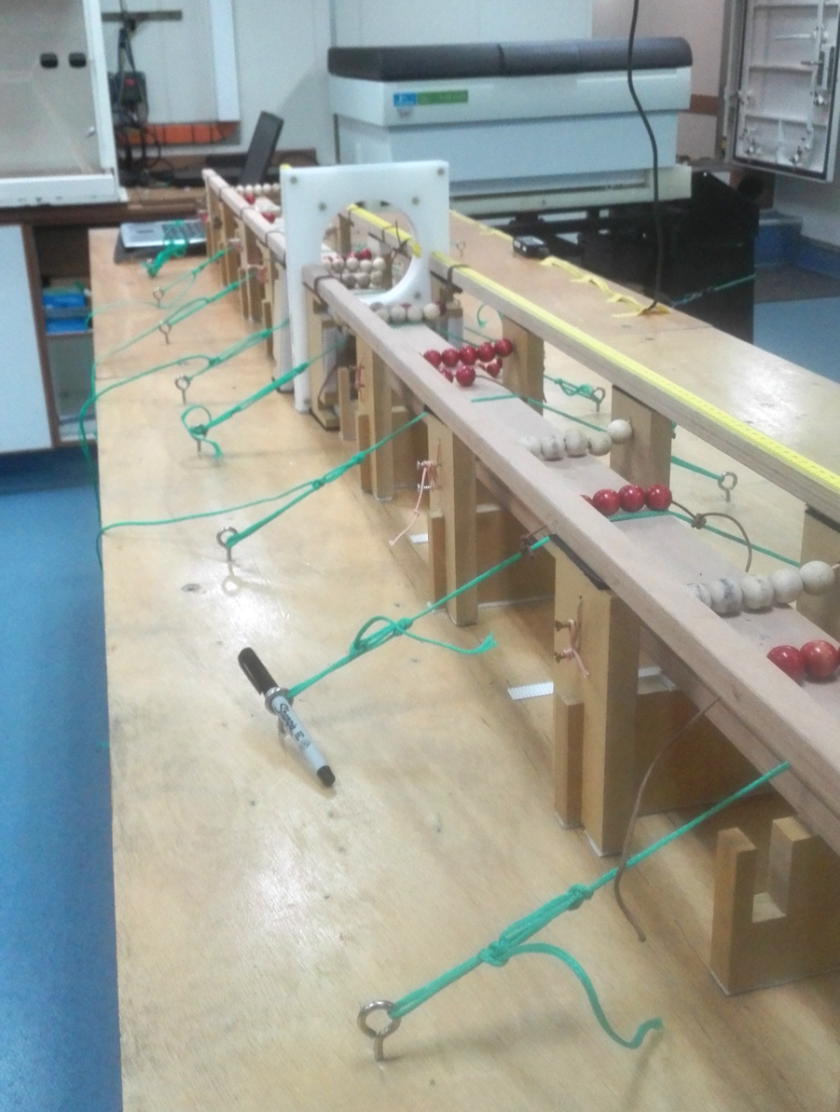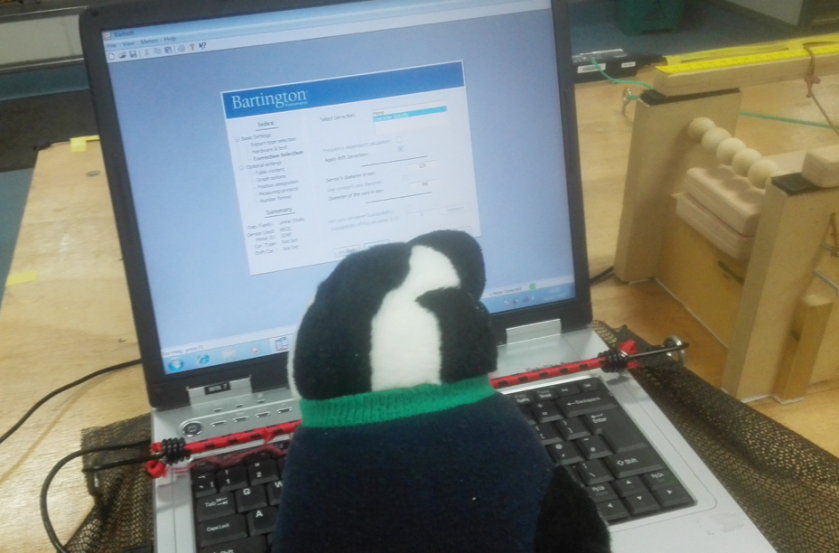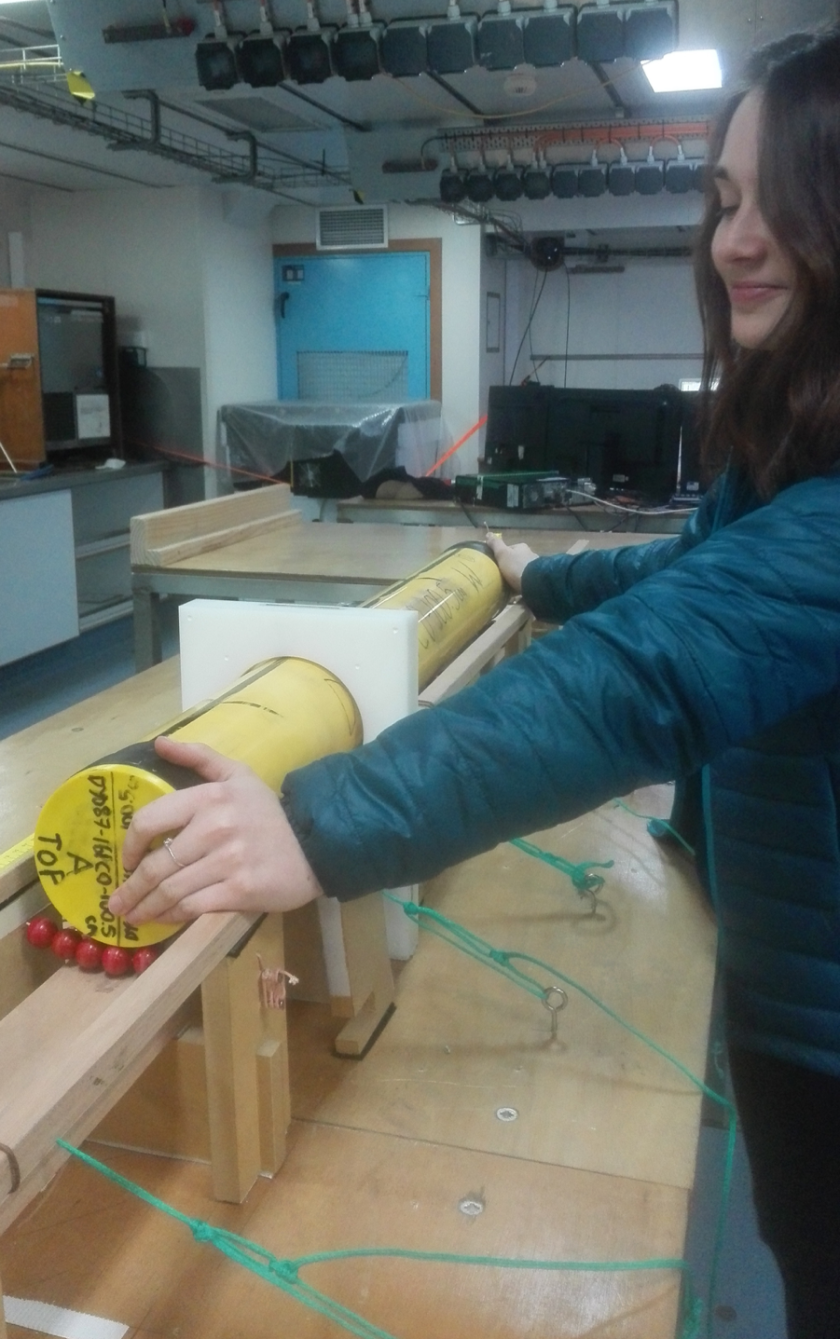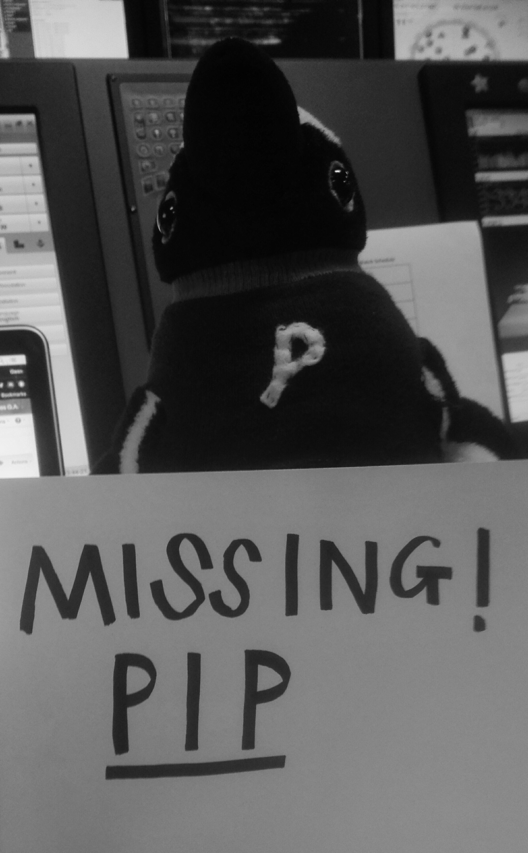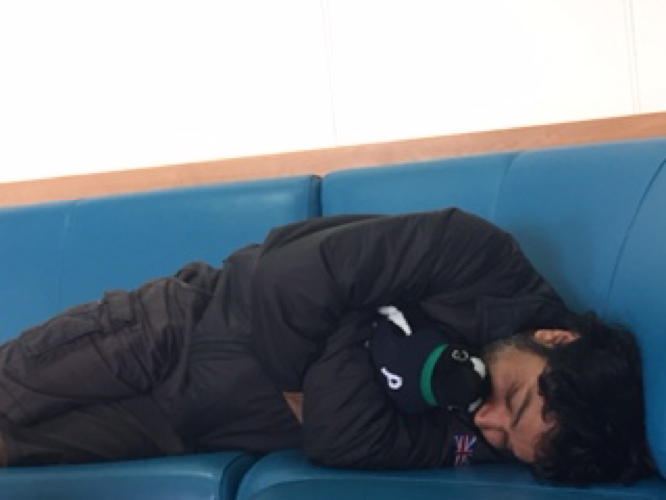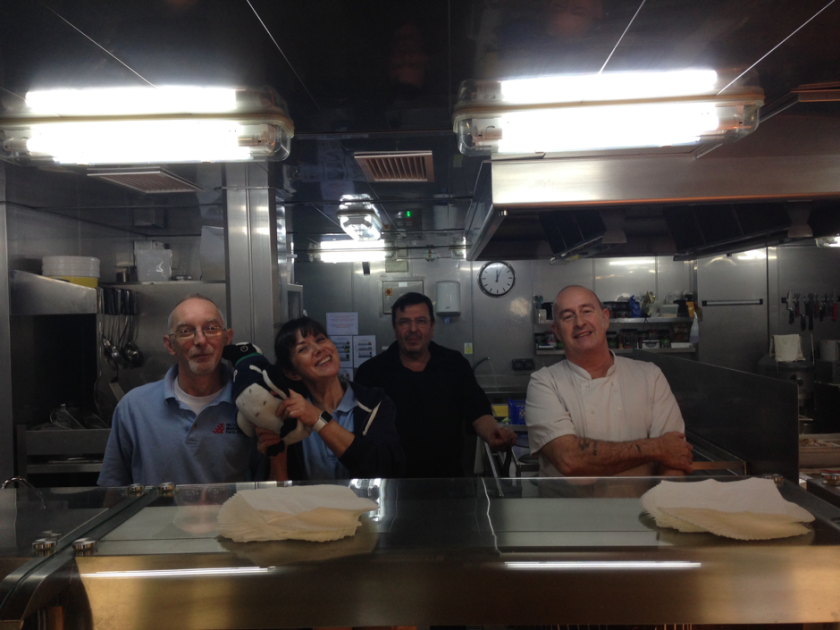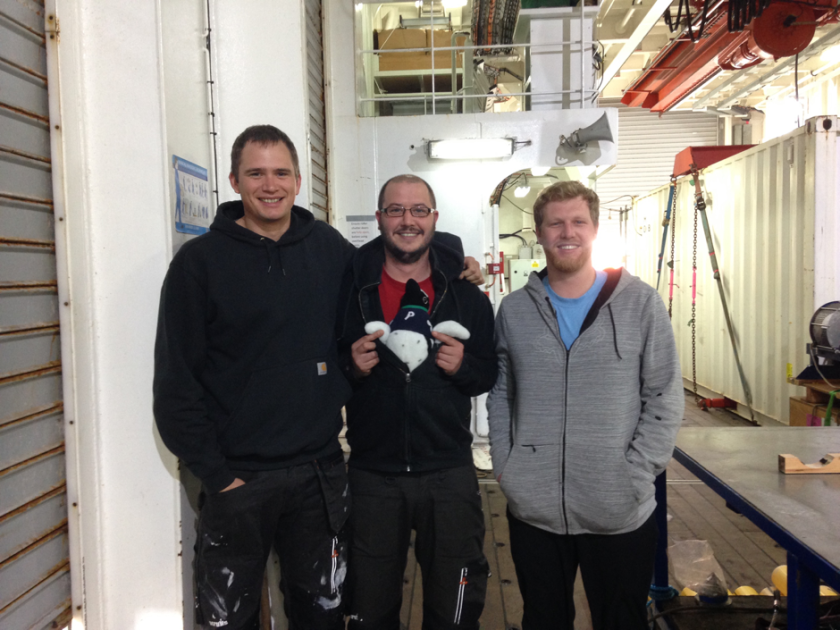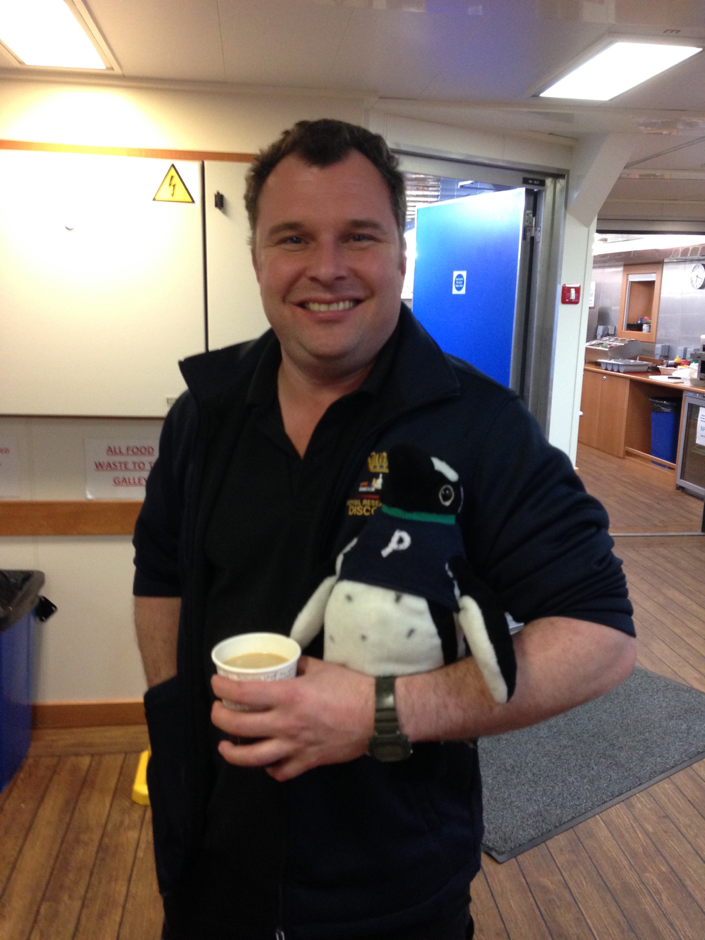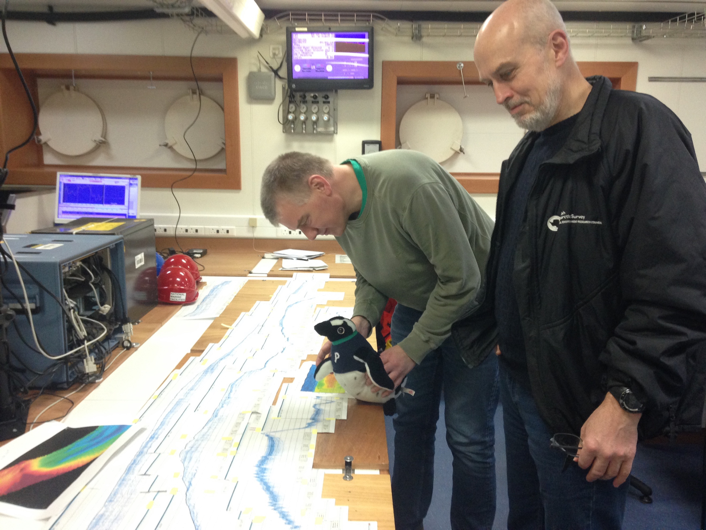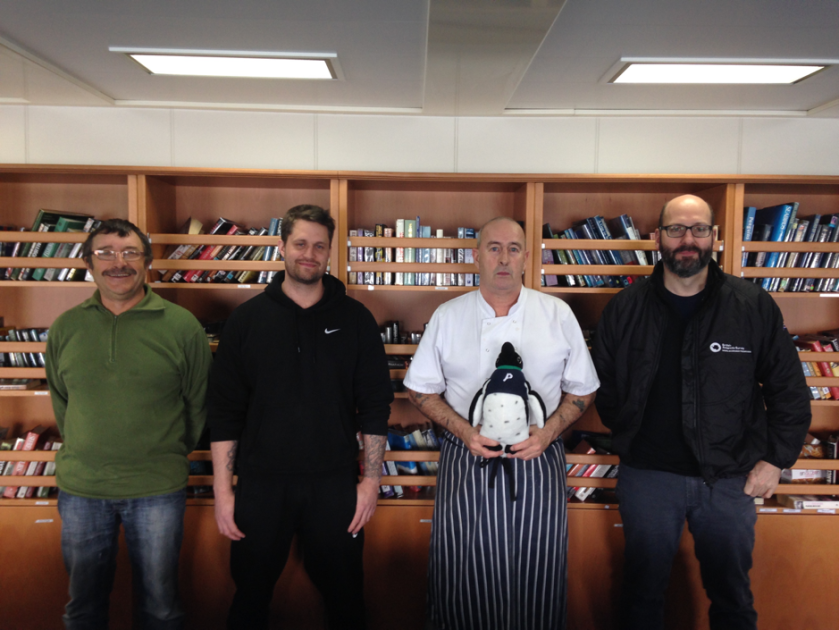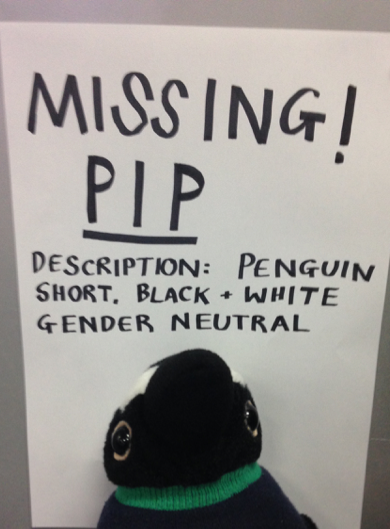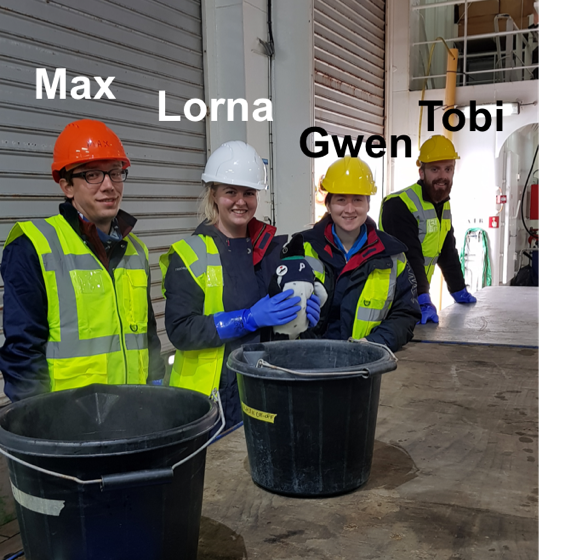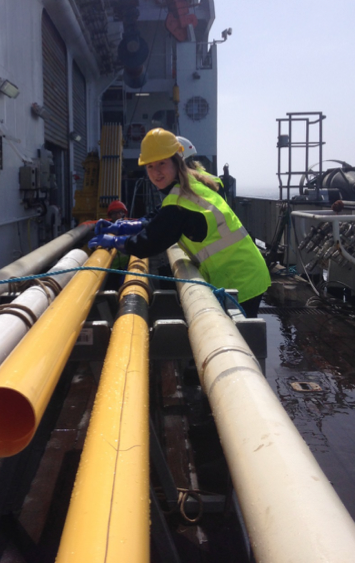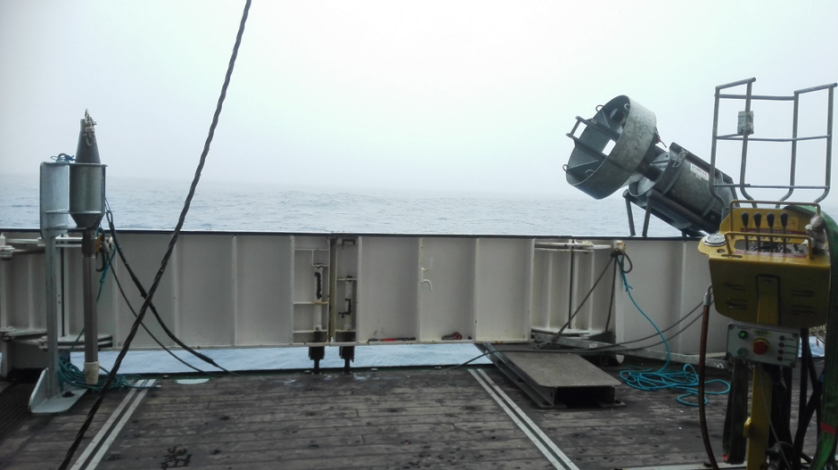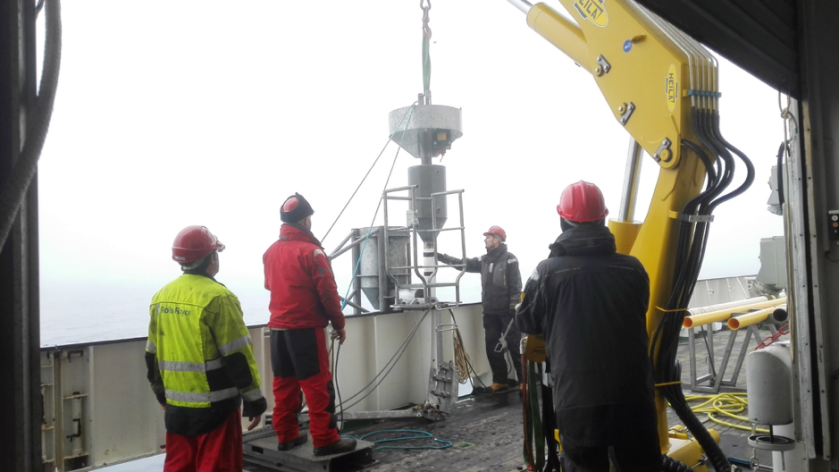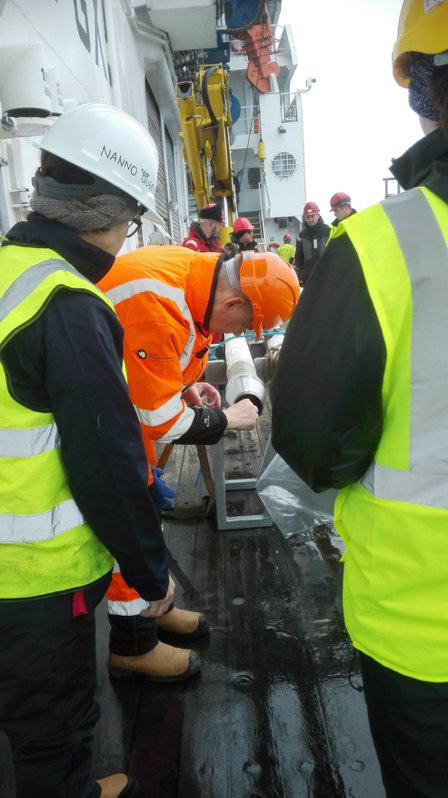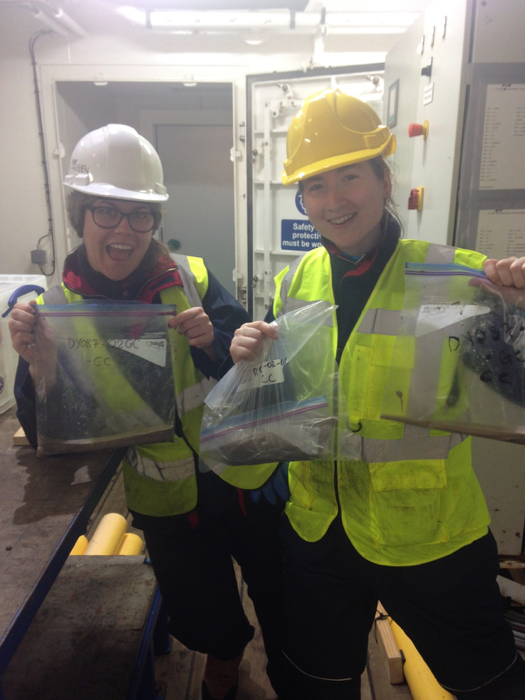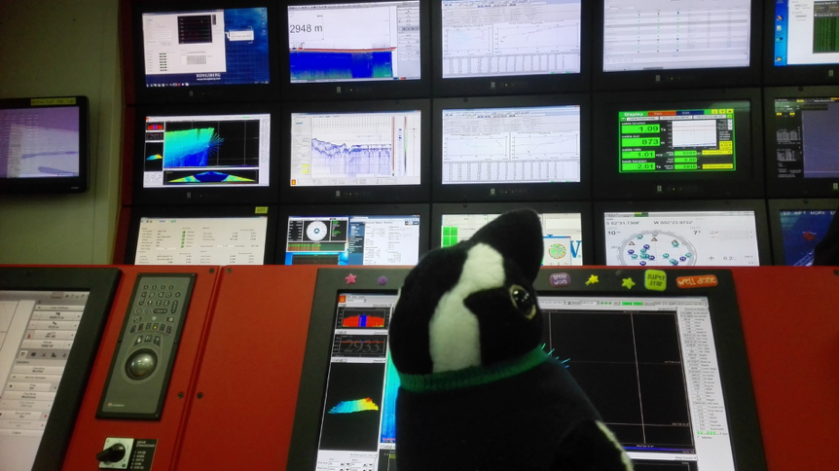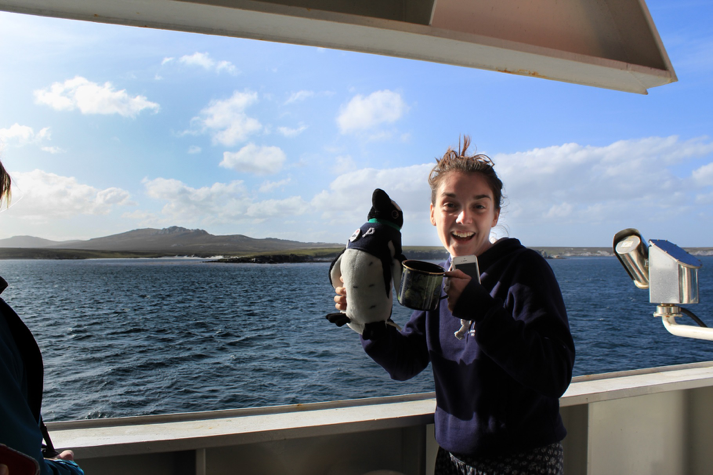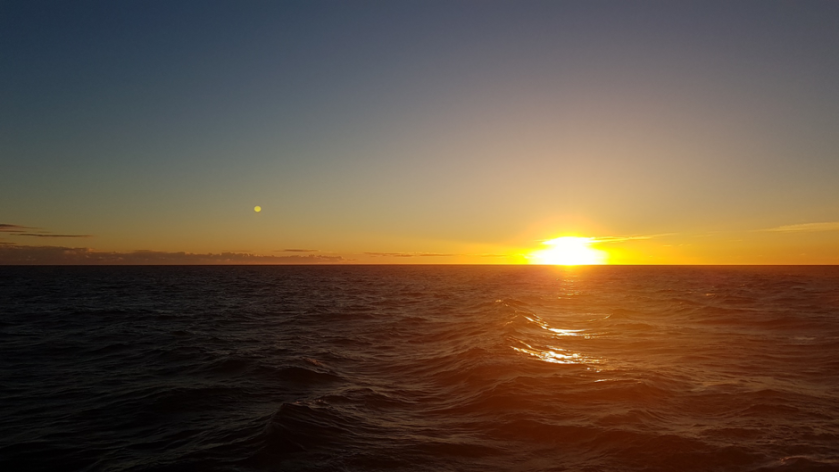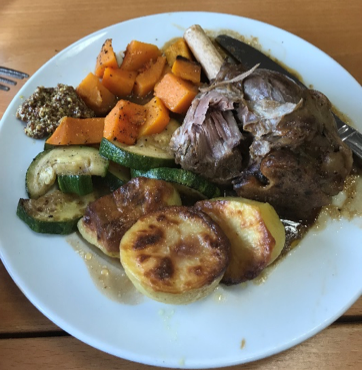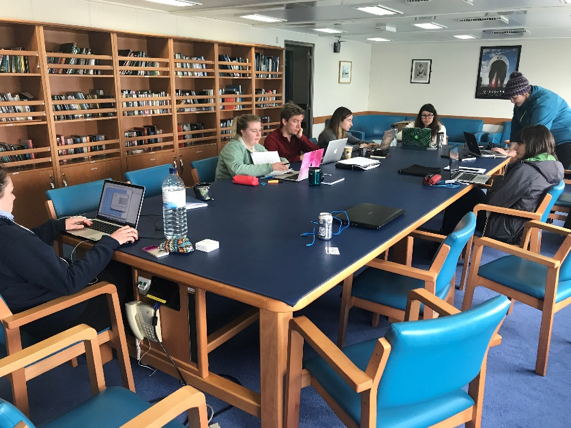Once we get the cores up from the seafloor, there is a very important job to do next – splitting them in two so we can see the sediment inside!
The first thing we do is suit up in PPE (personal protective equipment) including steel-toed boots, leather gloves, ear protectors and safety glasses. Then we place the section in a special tray to stop it moving, and use a router to cut a straight line almost all the way through the core liner. Here is scientist Claus-Dieter demonstrating how to use the router!
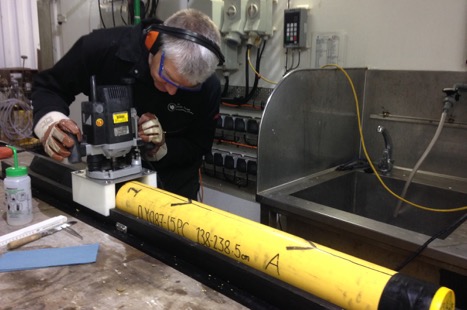
The router makes a lot of plastic shavings (or ‘swarf’) where it cuts through the core liner. In this area of the world, there are very strict rules to make sure plastics and other contaminants don’t end up in the oceans – in the next picture, scientist Gwen is making sure to hoover up all the little plastic pieces!
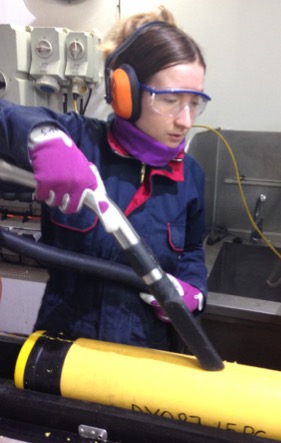
The next step is to cut all the way through the thick plastic core liner using a hand-held vibrational saw. Scientist Amy is holding the core steady while CD finishes cutting the section.
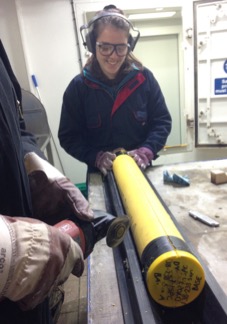
We then clear out any left-over plastic swarf from the cut using a hooked stanley knife.
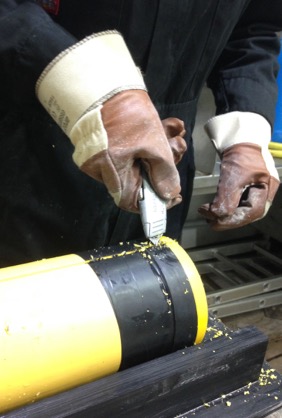
One side of the core liner is cut all the way through – but now we need to cut the other side! So sediment or water doesn’t escape while we finish the other side, we have to duct tape along the length of the cut.
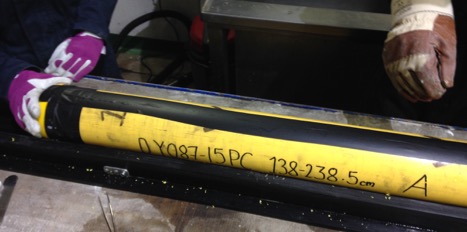
The section is rotated, and the procedure is then repeated on the other side! Once we have finished, we have to cut through the thicker plastic end-caps. For this we use the stanley knife, along with a pallet knife to align the cut.
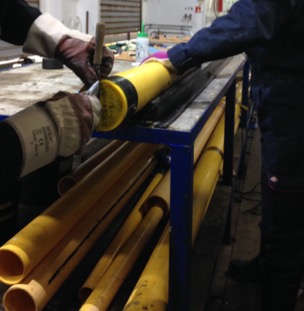
Once this is finished, we are ready to start splitting! The section is moved off the tray and placed carefully on the table. Long spatulas are used to wedge open the sides of the core liner. This is so we can pass cheese wire all the way through the section, splitting it (hopefully neatly!) in half.
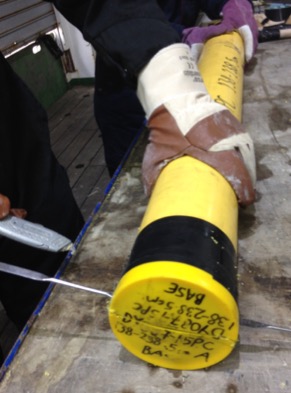
Here Amy is holding the cheese wire we just used to split the section.
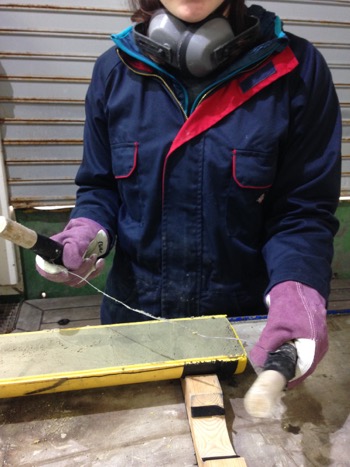
And it is split neatly in two halves – the Working Half and the Archive Half! Look at those cool colour changes through the section. Amy is pointing out some evidence of bioturbation, where critters have burrowed through the sediment under the seafloor.
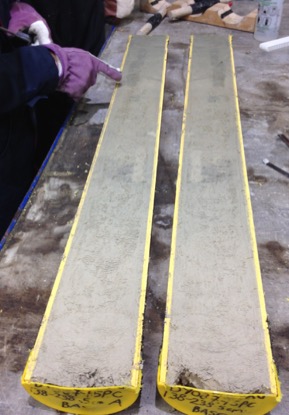
Next we use these big knives (called ‘cheese knives’ – although we’re not sure what kind of cheese you would use these for!) to carefully smooth the surface of the sediment, which will have been disturbed when we passed the wire through it during splitting.
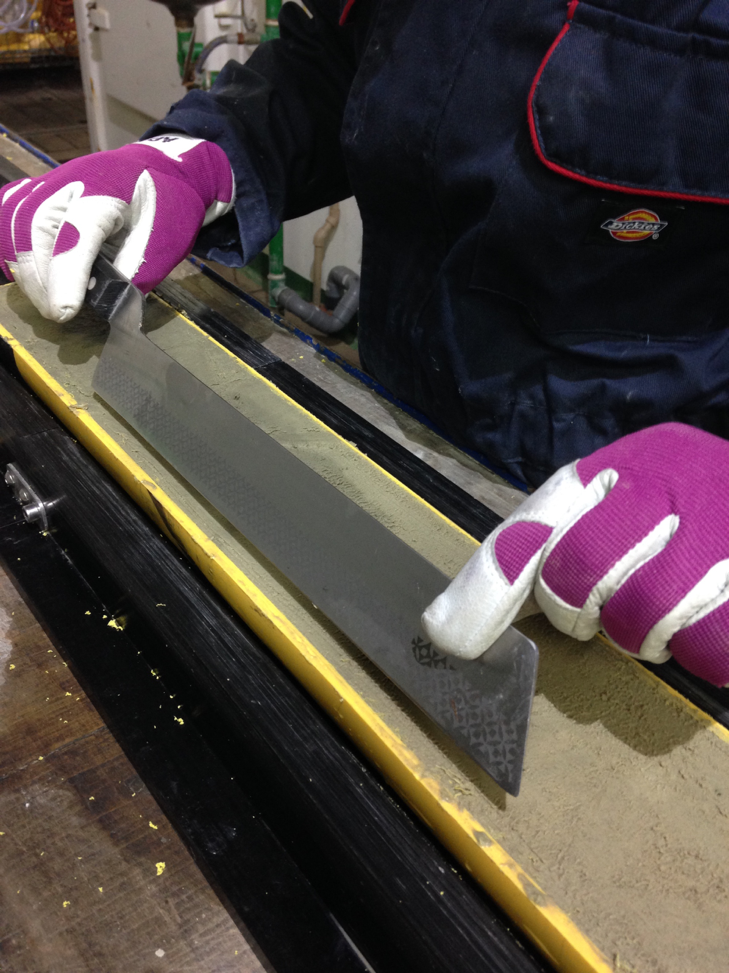
We then take the sections through to the Controlled Temperature Lab, where the cores are photographed for our records. It can be hard to take these photos on a moving ship!
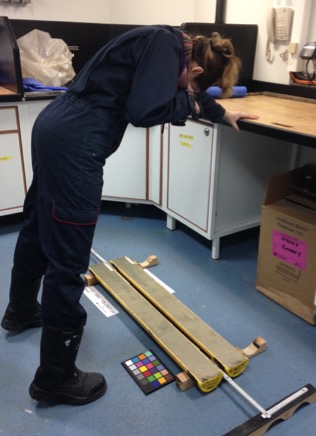
The Working Half is then carefully sampled at interesting intervals through the section. We take small samples for biostratigraphy (where the cores are dated using tiny organisms such as nannofossils, diatoms and radiolarians) and lithological smear slides. Larger samples are taken as well – these are washed through a very fine sieve and examined under a microscope for foraminifera, which are also used to date the sediments.
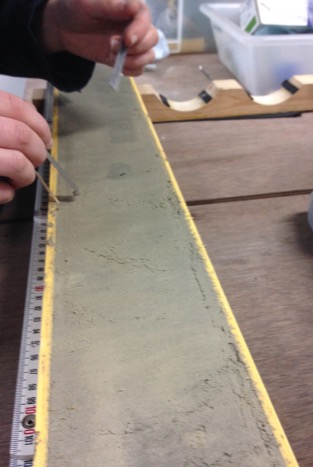
The voids we make in the sediment from sampling are filled in with little pieces of foam.
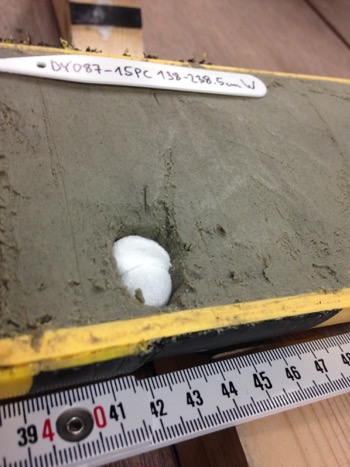
Meanwhile, a lithological description is done on the archive half. We note down many different things about the sedimentary units within the section. This can include:
- What is it made from?
- What is its colour?
- Can we recognize any sedimentary structures, including bedding, laminations or bioturbation?
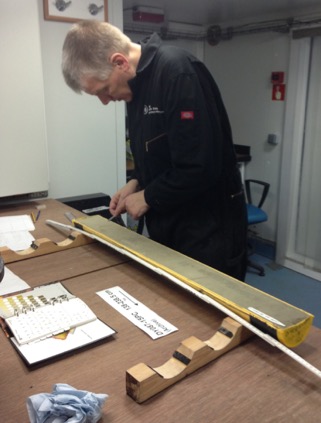
Here Claus is using a special colour chart known as the Munsell Colour Chart to assign an exact colour to the sediment.
Another section successfully split – time for another!
